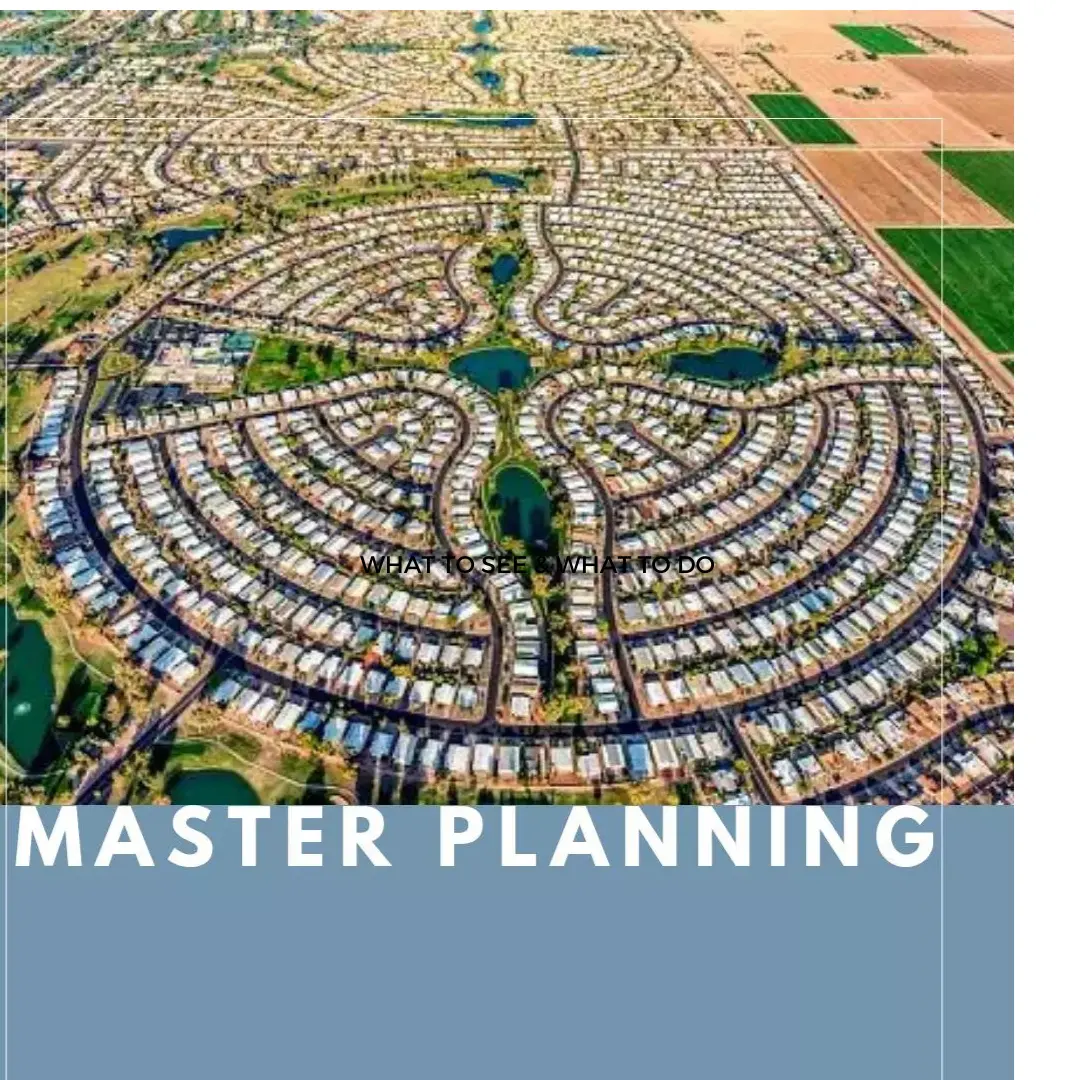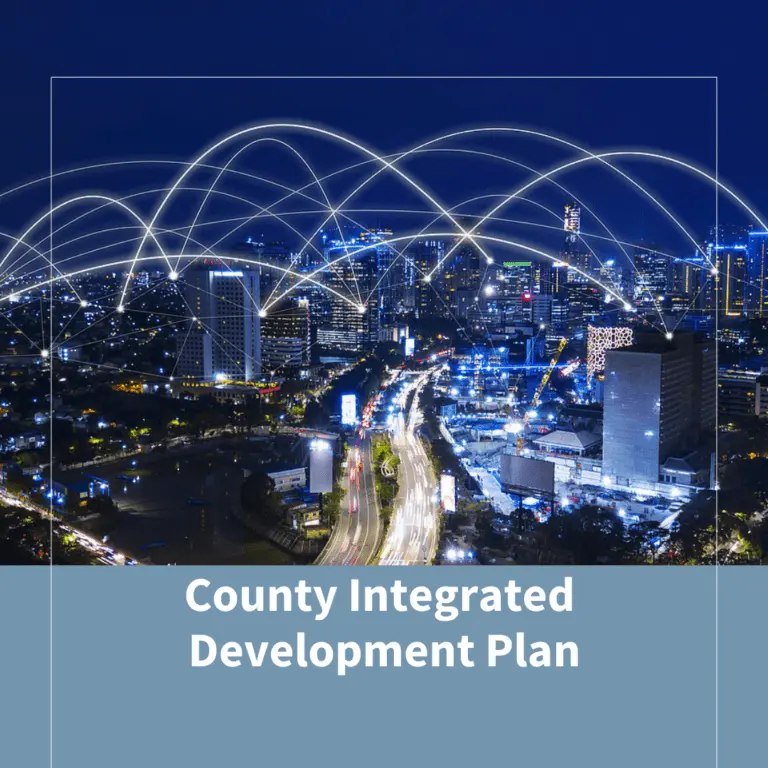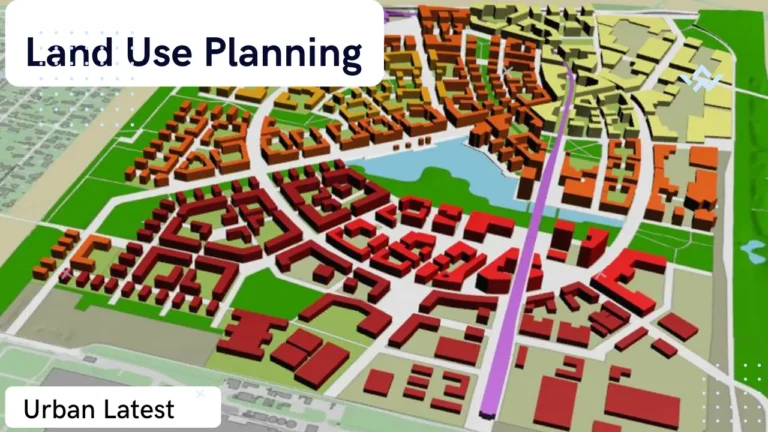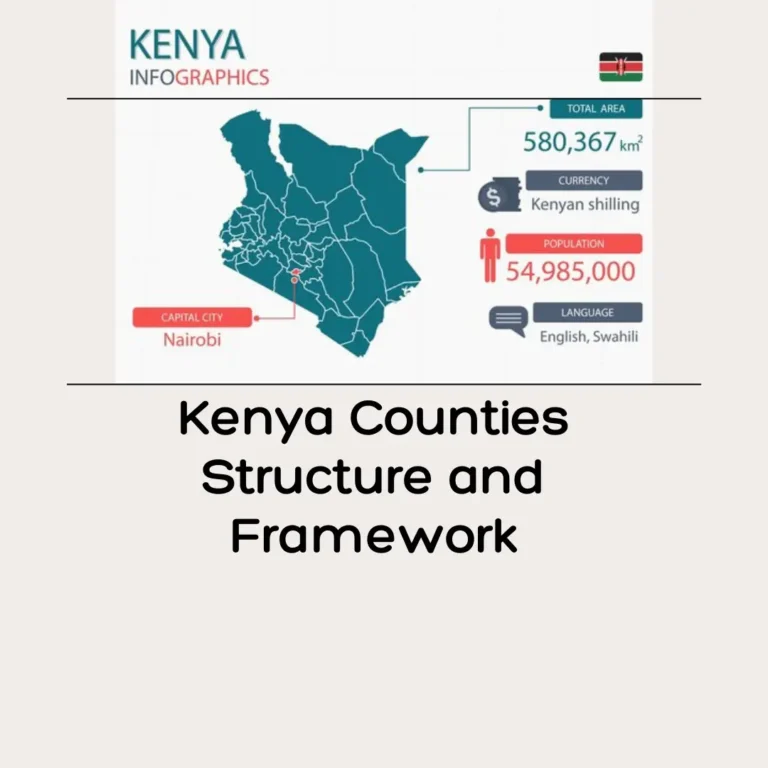Master planning is a strategic process that lays the foundation for successful project execution by outlining goals, resources, timelines, and strategies. It involves comprehensive analysis, strategic thinking, and effective decision-making to ensure that projects are completed efficiently and successfully. The concept of master planning, its evolution, key components, benefits, challenges, and its application in various sectors are covered deeply.
Master planning is the process of formulating a well-structured strategy to achieve specific goals and objectives. It involves creating a roadmap that guides the entire project from initiation to completion. Master planning takes into account various factors such as available resources, potential risks, stakeholder involvement, and technological advancements.
A successful master plan starts with a clear and compelling vision for your business’s future. Define what your business aspires to achieve in both the short and long term. This vision will serve as the guiding star, directing every aspect of your planning process.
The Evolution of Master Planning
Master planning has evolved significantly over the years. Initially, it was limited to physical infrastructure projects, but now it covers a wide range of sectors, including corporate enterprises, urban development, land use planning, county-integrated development plans, urban property management, and event management. All these sectors are presently the basic aims of master planning and planners develop any plan after a deep study of these sectors. With the advent of technology and data-driven decision-making, master planning has become more sophisticated and adaptable.
Key Components of Master Planning
Setting Clear Objectives
Master planning begins by defining clear and achievable objectives. These objectives serve as the foundation for the entire project and help in measuring its success.
In this phase, careful consideration and thoughtful analysis come into play. Objectives are not merely arbitrary targets; they are meticulously crafted statements that outline the desired outcomes of the project. They act as a compass, directing all subsequent planning and decision-making.
Each objective serves a dual purpose. On one hand, it provides a sense of direction to the project, ensuring that all efforts are aligned towards a common goal. This alignment prevents resource wastage and ensures that the project team’s energy is channeled productively. On the other hand, objectives also function as a benchmark for measuring success. They provide a tangible yardstick against which the project’s progress can be assessed.
Clear objectives are crucial for effective communication. When stakeholders, team members, and partners have a shared understanding of what the project aims to achieve, collaboration becomes more seamless. Additionally, these objectives aid in prioritization. They help project managers allocate resources, time, and efforts to tasks that directly contribute to the realization of these objectives.
Moreover, well-defined objectives foster motivation and accountability among team members. When everyone comprehends the bigger picture and their role in achieving it, a sense of purpose is ignited. This shared sense of purpose transcends individual tasks, creating a cohesive and motivated team.
As the project progresses, the significance of these objectives remains steadfast. They provide a constant point of reference, allowing for adjustments and refinements without losing sight of the ultimate destination. Moreover, when the project concludes, these objectives become the basis for evaluating success. By comparing the actual outcomes with the predefined objectives, a comprehensive assessment of the project’s achievements can be made.
In summation, the process of master planning embarks upon the essential step of setting clear and achievable objectives. These objectives serve as the nucleus of the entire project, offering direction, measurement, collaboration, and motivation. With the establishment of these well-crafted objectives, the path to a triumphant project becomes markedly clearer.”
Resource Allocation and Management
Resources are of two types, natural resource and man-made. Allocating both resources effectively is key to the success of any project. Master planning involves identifying the necessary resources, such as finances, manpower, and materials, and managing them efficiently.
To operate, maintain and expand a project it is directly dependent upon the resources. Financial resources, a cornerstone of any project, must be judiciously apportioned to ensure that every facet of the endeavor is adequately funded.
To make a project successful, we need to plan everything carefully. This includes figuring out how much money we’ll need, estimating costs, and thinking about what to do if something unexpected happens. We also need to make sure we have the right people with the right skills working on the project. It’s important to balance their skills and the amount of work they do, so everyone is productive and happy.
We also have to manage the things we need for the project, like materials. This means getting the materials, using them wisely, and not wasting anything. We need to be careful to avoid delays or problems. Even after we start, we have to keep an eye on things and be ready to change our plans if something goes wrong.
The plans for the project and how we use our resources go hand in hand. Good plans help us know what resources we need, and using our resources well helps us carry out the plans. When we do this together, it reduces the risks of running out of resources or using them the wrong way. This makes our project strong and likely to succeed. As we go along, we can change how we use our resources to handle new challenges and take advantage of opportunities.
In summary, using resources and making plans are really important for a project. It’s not just about getting things done, but also about thinking ahead and being smart. When we do both things well, the different parts of the project work together smoothly, and our idea becomes a successful reality.
.
Timeline Development
Developing a realistic timeline ensures that the project progresses smoothly. Timelines should consider dependencies, potential delays, and unexpected challenges.
When we plan a project, it’s important to create a detailed and realistic timeline. This timeline is like a map that helps us know what steps to take from the beginning to the end of the project.
Making this timeline isn’t just about picking dates for tasks. It’s like solving a puzzle, where each task fits together with others to show progress. Some tasks depend on others, so they have to happen in a certain order.
The timeline also helps us handle problems and delays. Projects don’t always go smoothly because of things like not having enough resources or technical issues. The timeline helps us prepare for these problems so we can handle them better.
The timeline also makes sure everyone knows what they’re responsible for and when things need to be done. This helps team members feel like they own their tasks and work harder to meet deadlines. It also keeps everyone informed about the project’s progress, which builds trust.
The timeline needs to be realistic. If we try to do too much too fast, it can lead to problems like low quality or even failing the project. So, we need to be balanced and think about how much time each task really needs.
Even though we make a plan, it doesn’t mean it can’t change. The timeline can be adjusted as the project goes on. We need to check it regularly to make sure it still fits with what’s happening. Being able to change the plan when needed is important for the project’s success.
In the end, planning a project well means creating a timeline that makes sense. This timeline shows the project’s main parts, how they’re connected, and how we’ll handle challenges. A good timeline is like a map that guides us and keeps us safe on the project’s journey
Creating a Comprehensive Master Plan
A comprehensive master plan includes detailed strategies for each phase of the project. It outlines tasks, responsibilities, and milestones to keep the project on track.
A master plan is a long-term plan and the rest of the development of an area is concerned with it so it’s really important to make a detailed plan that covers everything. This plan isn’t just a piece of paper; it’s like a special map that guides us through the whole project.
Think of this plan as a collection of smart ideas from the whole team. It’s a special map that shows us what to do, how to decide, and where to use our resources. Every step is described carefully, like following a song’s notes, to make sure everyone knows what to do. Everyone on the team gets a special job that they know they’re responsible for.
In this plan, there are important points we call milestones. These are like stars that show us how far we’ve come and where we’re going. They’re not just dots; they’re symbols that tell us we’re doing well and moving ahead. They keep us excited and motivated as we reach one goal after another.
But remember, this plan can change as the project goes on. Sometimes new things come up or we face challenges we didn’t expect. So, a good plan can be changed to fit these new things while still keeping our main goal in mind. This makes the plan more like a helpful guide that can change when needed.
Also, this plan isn’t just for the team. It helps everyone involved understand what’s going on. It’s like a bridge that connects the team with others who care about the project. Clear ideas, specific tasks, and clear responsibilities show everyone how things are going and where they’re headed. This makes sure everyone knows what’s happening and can work together smoothly.
Making this detailed plan is like creating beautiful artwork with careful planning. It’s a special strategy that’s more than just a tool for managing a project. It becomes the strong foundation that makes the project great. With clear strategies, clear tasks, and important goals, this plan acts like a compass, guiding the project to success without any doubt
Conducting Research and Analysis
Thorough research and analysis help in understanding the project’s feasibility, potential risks, and market trends. This information aids in making informed decisions.
This step helps us understand if our project is possible and what problems we might face. It also helps us see what’s happening in the market and where things are going.
Doing research is like finding a treasure of information. This information helps us make smart choices about the project. Instead of just guessing, we can make decisions based on facts. Research also helps us understand the challenges we might face and spots opportunities we might not have noticed.
The analysis part of this step is really important too. It’s like taking all the information we found and looking for patterns. We can use this to figure out what might go wrong and how to be ready. Also, understanding what’s happening in the market helps us fit our project with the current trends.
This research and analysis don’t just help the project right now. They also teach us important lessons from the past. By looking at what worked before and what didn’t, we can do a better job this time.
This step isn’t a one-time thing; it keeps going as the project goes on. New information comes up, and things change. Checking regularly helps us make the best decisions using the most up-to-date info. This keeps us flexible and ready to handle challenges.
In short, doing thorough research and analysis is like having a special guide for our planning. It helps us see if our project is possible, find potential problems, and understand what’s happening in the market. This step turns confusion into clarity, helps us make good choices, and gets our project ready for success.
Identifying Stakeholders and Roles
Identifying stakeholders and their roles is essential for effective communication and collaboration. Their input can influence the project’s direction and success.
Imagine master planning like creating a big puzzle, and an important piece is figuring out who’s involved and what they do. This is a bit like getting a bunch of different musicians together to play beautiful music. It’s a crucial step for making sure everyone talks well, works together, and makes the project go smoothly.
Each person involved, called a stakeholder, is like a different musical instrument in our orchestra. They all bring something special to the project. By understanding who they are and what they do, the project becomes more than just a project – it becomes a team effort. The ideas from investors, people who will use the project, and others can really change how things go.
To make this work, we need to talk to each other clearly. When we know who’s doing what, we can talk in ways that make sense to them. Good communication helps everyone feel part of the team, and everyone’s ideas matter.
What’s cool is that every stakeholder brings their own thoughts and experiences. By mixing these together, the project becomes even better. This is like making a picture with lots of different colors, creating something new and exciting.
Stakeholders aren’t just watching; they’re like captains of the ship. They invest their time, ideas, and money and want to see good results. By making sure everyone knows what they’re doing and what to expect, the project becomes a united effort. We celebrate milestones together and reach goals as a team.
Sometimes, things might change as the project goes on. People’s roles could shift, and new ideas might come up. Being ready for change helps us keep things going well. Regular check-ins make sure everyone’s still doing the right things as the project moves ahead.
To wrap up, finding out who’s involved and what they do isn’t just boring paperwork. It’s like adding flavors of teamwork, diversity, and fresh ideas to the master plan. By talking well, using their ideas, and understanding their hopes, the project turns into a beautiful symphony led by all the people involved, leading to a fantastic success
Risk Assessment and Mitigation
Master planning involves identifying potential risks and developing strategies to mitigate them. This proactive approach minimizes the impact of unforeseen challenges.
Thinking about risks is like preparing for a journey. It’s more than just a simple check; it’s like looking ahead to see what might cause problems. Imagine finding hidden obstacles on a path and knowing how to overcome them. These obstacles could be things like money troubles, technical issues, rules getting in the way, or not having enough resources. We carefully list all these possible problems and think about how bad they could be.
After we know what might go wrong, we make a plan to deal with these problems. Think of it as a toolbox filled with tools to fix things. This toolbox is ready to use whenever we need it. So, if any of these problems show up, we’re prepared to handle them. We don’t panic; we use what we know to solve the issues.
The reason this step is so important is because it has a big effect on the whole project. If we don’t prepare for problems, they could ruin everything. But when we do prepare and solve problems, the project becomes even stronger. We turn challenges into chances to get better. When we find a problem and solve it, it stops being something that stops us and becomes something that helps us grow and get stronger.
This way of thinking isn’t something that happens once; it’s something we keep doing. As the project moves forward, new problems might come up, or old ones could change. So, we need to keep checking to make sure we’re ready to handle anything that comes our way.
Getting ready for problems and finding ways to solve them fits perfectly with the idea of planning. It’s about being smart, getting ready, and being able to change if things don’t go as planned.
The Role of Technology in Master Planning
Technology plays a pivotal role in modern master planning. Utilizing project management software enhances communication, collaboration, and monitoring throughout the project lifecycle.
In the world of planning big projects, technology plays a super important role. It’s like a powerful helper that makes everything better and faster. Technology isn’t just an extra thing; it’s like a superhero that changes how we plan, do, and succeed.
One big way technology helps is with special computer programs for managing projects. These programs are like a magic control center that helps us organize the whole plan really well. Before, talking to each other and keeping track of things was tough, but now it’s easy and smooth. This changes a lot, making everything in the project work better.
Talking to each other becomes amazing. Even if people are far away or in different time zones, they can still talk and share ideas using computers. They can give feedback right away, and decisions can be made quickly. This makes the project work really well, no matter where people are.
People working together also get better. Even if they’re from different parts of the world, they can use special digital places to work together. They share their knowledge and make great ideas by putting their heads together. These digital spaces create a feeling of togetherness, where ideas flow freely and everyone brings something cool to the table.
Watching how things are going becomes super clear. Instead of puzzling over papers, we can see the progress happening right away on the computer. We can see how well things are going when they’ll be done, and if we’re hitting our goals. This clear view helps everyone stay responsible because every task, milestone, and success is written down digitally.
Technology doesn’t stop after the project is done. It helps us learn from what we did. We look at the data and see what went well and what can be improved. This wisdom helps us do even better next time.
Utilizing Project Management Software
Project management software streamlines project tracking, resource allocation, and communication. It facilitates real-time updates and fosters efficient decision-making.
In the realm of master planning, the strategic utilization of project management software emerges as a game-changing paradigm. This technological marvel doesn’t just augment the process; it transforms it into an orchestrated symphony of efficiency, accuracy, and collaboration. The impact of project management software reverberates through every aspect of planning, execution, and success measurement.
At its core, project management software stands as a digital command center, orchestrating the project’s intricacies with finesse. Tracking progress morphs from a laborious task into a dynamic visualization, where tasks and milestones dance in harmony on a virtual canvas. This real-time view offers a tangible pulse of the project’s heartbeat, allowing stakeholders and team members to remain aligned with its evolution.
Resource allocation, a puzzle once fraught with complexity, transforms into a streamlined process. The software acts as a strategic conductor, harmonizing the allocation of manpower, finances, and materials. This precision minimizes wastage, maximizes efficiency, and ensures that resources are optimally channeled toward the project’s goals.
Communication, once constrained by physical proximity, now transcends boundaries. Project management software creates a virtual nexus where stakeholders, irrespective of their global locations, converge. Updates, insights, and decisions flow seamlessly, unifying perspectives and nurturing collaboration. Decisions are made swiftly, armed with the latest information, and propelled by an enhanced sense of alignment.
The real magic lies in its ability to facilitate informed decision-making. Data and insights are no longer buried beneath heaps of paperwork or obscured by convoluted processes. They emerge as clear signals, guiding the project’s direction. Whether it’s adjusting timelines, reassigning tasks, or reallocating resources, decisions are underpinned by real-time data, propelling the project forward with acumen.
The influence of project management software doesn’t fade as the project concludes. It leaves a digital trail, a testament to the journey’s intricacies. The post-project analysis becomes an exercise in reflection and growth, with data-driven insights paving the way for continuous improvement.
In summary, project management software is more than a tool; it’s a transformative force that elevates master planning to new heights. By streamlining tracking, enhancing resource allocation, fostering communication, and facilitating informed decision-making, it reshapes how projects are conceptualized, executed, and celebrated.
Data-Driven Decision Making
Data-driven insights help in making informed decisions at every stage of the project. Analyzing data allows for adjustments and optimizations as needed.
In the intricate tapestry of master planning, the thread of data-driven decision-making weaves a narrative of foresight, precision, and adaptability. This approach transcends the realm of intuition and conjecture, harnessing the power of information to illuminate the project’s path and guide decision-making at every turn.
Data-driven decision-making is more than a trend; it’s a strategic philosophy. It rests upon the foundation of rigorous data collection, analysis, and interpretation. This process uncovers patterns, unveils insights, and paints a comprehensive picture of the project’s progress, challenges, and opportunities.
At the heart of this paradigm lies the notion that decisions shouldn’t be made in a vacuum. Rather, they should be informed by the tangible evidence that data provides. From resource allocation to timeline adjustments, from risk mitigation strategies to process optimizations, every decision is underpinned by a data-backed rationale.
The role of data-driven insights isn’t confined to a single stage of the project; it spans its entire lifecycle. During the planning phase, historical data and industry benchmarks guide the formulation of realistic timelines, resource estimates, and objectives. As the project unfolds, real-time data offers a clear view of progress, allowing for timely course corrections and informed adjustments.
The beauty of data-driven decision-making lies in its adaptability. In a dynamic landscape, where uncertainties and complexities reign, the ability to pivot becomes a potent weapon. Data, as a guiding light, directs these pivots, ensuring that they are calculated and strategic, rather than impulsive.
Furthermore, the impact of data isn’t limited to the project team; it extends to stakeholders and partners. Transparent data sharing fosters a sense of unity, where decisions are understood, and actions are aligned. Stakeholders can witness the rationale behind decisions and engage in a more informed manner.
In conclusion, data-driven decision-making is a testament to the power of information in master planning. By utilizing data to inform every aspect of the project, from planning to execution to evaluation, a project transcends mere intuition, embarking on a journey guided by insights, propelled by adaptability, and destined for triumph.
Benefits of Effective Master Planning
Effective master planning yields several benefits, including:
Improved Project Efficiency
Clear objectives, well-defined strategies, and efficient resource allocation lead to improved project efficiency and timely completion.
In the realm of master planning, the pursuit of improved project efficiency stands as a paramount objective. This pursuit is not mere aspiration; it’s a strategic imperative that draws its essence from clear objectives, well-crafted strategies, and meticulous resource allocation. The confluence of these elements orchestrates a symphony of coherence, propelling the project towards timely completion and triumphant success.
At the core of this endeavor are clear objectives that act as guiding stars. These objectives transcend mere statements; they’re visionary compasses that provide direction and purpose. When every team member comprehends the ultimate destination, efforts align, and resource allocation gains purpose.
Well-defined strategies form the strategic backbone of project efficiency. They outline the roadmap, detailing how each objective will be realized. Strategies encompass a panorama of tasks, timelines, dependencies, and responsibilities. This comprehensive approach mitigates the risk of confusion, redundancy, or misalignment, fostering an environment where productivity thrives.
Efficient resource allocation, another integral facet, ensures that the project’s engine is fueled optimally. Just as a well-maintained engine propels a vehicle efficiently, judicious resource distribution ensures that time, manpower, and finances are harnessed effectively. This prevents wastage and bottlenecking, allowing the project’s momentum to be maintained consistently.
The ultimate fruit of these efforts is improved efficiency, a hallmark of master planning executed with finesse. When objectives are clear, strategies are precise, and resources are optimized, the project operates like a well-oiled machine. Tasks are executed with purpose, and timelines are met with grace. This efficiency is not just a buzzword; it translates into tangible gains, such as reduced costs, enhanced quality, and, most importantly, timely completion.
The pursuit of improved efficiency is not just an isolated endeavor; it’s a foundational principle that infuses every phase of master planning. It’s a commitment to excellence, where every decision, every strategy, and every resource allocation is aimed at achieving more with less. In this symphony of precision and cohesion, project efficiency emerges not as a distant goal, but as a reality to be celebrated.
Enhanced Communication and Collaboration
A comprehensive master plan enhances communication among team members and stakeholders. It ensures everyone is on the same page and promotes collaborative problem-solving.
Adaptability to Changes
Master planning accounts for potential changes and disruptions. A flexible approach allows the project to adapt to unforeseen circumstances without derailing progress.
Challenges in Master Planning
Master planning comes with its own set of challenges, including:
Balancing Flexibility and Structure
Striking the right balance between flexibility and structure is essential. While flexibility accommodates changes, the structure ensures project coherence and direction.
Overcoming Resistance to Change
Implementing a master plan may face resistance from stakeholders accustomed to traditional approaches. Effective communication and addressing concerns are crucial.
Master Planning in Different Sectors
Master planning is applied in various sectors:
Corporate Enterprises
Corporations use master planning to align their projects with business objectives. It helps in resource allocation, risk management, and efficient execution.
Urban Development Projects
Urban planning involves master planning to ensure sustainable development, efficient land use, and the creation of vibrant communities.
Event Management
Event planners utilize master planning to coordinate logistics, schedules, and resources for successful events.
Strategies for Successful Master Planning
To ensure successful master planning, consider these strategies:
Involving Cross-Functional Teams
Cross-functional teams bring diverse perspectives to the planning process. Their input contributes to well-rounded strategies.
Continuous Monitoring and Evaluation
Regular monitoring and evaluation help in identifying deviations from the plan and making timely adjustments.
Master Planning vs. Traditional Project Management
Master planning and traditional project management share similarities but differ in their approach:
Contrasts and Synergies
Master planning focuses on a holistic view of the project, while traditional project management emphasizes task-specific execution. The two approaches can complement each other for better outcomes.
Future Trends in Master Planning
The future of master planning holds exciting possibilities:
Integration of Artificial Intelligence
AI-powered tools can analyze vast amounts of data to provide insights, enabling more accurate decision-making.
Sustainable and Eco-Friendly Focus
Future master planning will likely emphasize sustainable practices and eco-friendly solutions to align with global environmental goals.
Conclusion
Master planning is a dynamic and strategic approach to project execution. By setting clear objectives, utilizing resources efficiently, and adapting to changes, organizations can achieve successful project outcomes. As technology continues to advance and sustainability gains importance, master planning will remain a crucial tool for realizing complex projects efficiently and responsibly.
What is master planning?
Master planning is a strategic process that outlines goals, resources, and strategies for successful project execution, guiding projects from initiation to completion.
Why is clear objective setting important in master planning?
Clear objectives provide a roadmap for the entire project, ensuring a focused approach and enabling the measurement of success.
How does technology influence master planning?
Technology, including project management software and data analysis tools, enhances communication, collaboration, and decision-making throughout the project lifecycle.
What challenges are associated with master planning?
Balancing flexibility and structure, as well as overcoming resistance to change from stakeholders, can pose challenges in the master planning process.
How does master planning differ from traditional project management?
While traditional project management focuses on task-specific execution, master planning takes a holistic approach, considering the entire project lifecycle and its strategic aspects.






